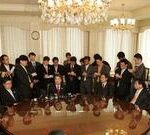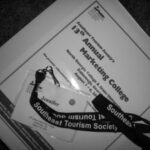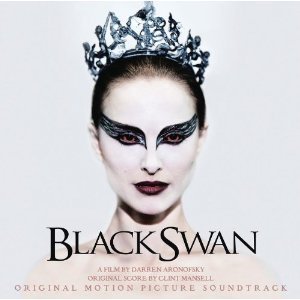The Republic of Singapore is one of the nations which has left a deep impression on the world by its rapid economic development and high standard of living. This Southeast Asian country is the most developed country in the region and is considered as one of the four Asian tigers including: Taiwan, Hong Kong, and Korea. Located at one of the crossroads of the world, Singapore’s strategic position has helped this country grow into a major center for trade, communications and tourism.
Singapore is an island which is circled by a lot of other small islands. It is linked to Malaysia by two causeway bridges, and linked to the Riau Archipelago of Indonesia by just a quick ferry trip. From Singapore, one can go to other countries in Southeast Asia like Thailand, Vietnam, Philippines…by a short air plane flight. By having one of the busiest ports of the world, and a modern airport of international stature, Singapore is becoming the gateway to Southeast Asia. The society of Singapore is like a cosmopolitan city where people in different races live harmoniously and interact each other. Almost all Singaporeans are immigrants and they are the mixture of Malaysian, Indian, Chinese, and European. The heritage culture of Singapore expresses the diversity of population as the various groups continue to rejoice in their own cultures while they intermingle with one another. Festivals, religion, language, cuisine, arts…all of these terms reflect this diversified culture. Each radical group has its own distinctive religion and there are colorful festivals for some significant events all year around. Although the festivals are special to certain races, they are nonetheless enjoyed by all. For example, although the Lunar New Year is the festival for Chinese, all Singaporean people have about two weeks vacation to have fun and welcome this great festive occasion. There are four main languages in Singapore: English, Mandarin, Malay, and Tamil. English has become widespread in Singapore after it was implemented as a first language in the education system. It is also the language that unites the different ethnic groups. Naturally, the presence of other languages has influenced the English of Singapore, especially in informal uses, which becomes Singlish. Singlish is the badge of identity for many Singaporeans.
A country with a very small area (704 km2, 190th on the world) is the reason that makes the population density of Singapore one of the highest in the world (4th). The Singaporean population growth per year is not so high. The high percentage rate is largely from the net of immigrants (Singapore residents grow at 1.8% and total population grows at 4.4%). The large number of immigrants have kept the Singapore population from declining, and it is also the potential labor sources and economic investments. Although this country does not have so many natural resources or an area for industrial zones, a high standard of living and the GDP per capita is far above the Southeast Asian ground (US$30,723.61, 18th on the world). These are the forceful examples of this developed economic system.
The politics of Singapore is a form of a parliamentary republic. Since becoming an independent country from England in 1965, this country has been dominated by the People’s Action Party. The form of government in Singapore is considered to be closer to authoritarianism rather than the true democracy. The government is the major and active player in the economy. It directs and targets the economy through laws, regulations, and incentives. The governance of the current party somewhat helps this country achieve a successful market economy by having proper laws which are inherited from British and British Indian laws, creating a friendly and safe economic environment. According to the statistical data of Transparency International, Singapore is the country that consistently is rated as the least corrupt country in Asia and in the top ten cleanest countries in the world.
In the 20th century, a lot of Southeast Asian countries made an obvious advance in economic development, and some of them stepped up into the industrialization. By having a really high rate of industrial development (mostly by export), and is much more developed than other countries in the third world, these countries are considered Newly Industrialized Countries (NICs). Singapore is a typical example, and what people did in this country in the last 50 years really left an impression all over the world. From the independence in 1965, this country has achieved almost a high economic growth at 8% for over three decades. This impressive number more or less explains the reason why their GDP per capita level is becoming similar to many OECD countries, which are the most developed economic systems in the world. How can this small country, without any natural resources, do such a great leap like that? The Singapore economy is a free market economy. Centralized decision-making and planning have been key for the development. In the period of time before 1960, Singapore’s major economic function was processing and shipping of goods from nearby lands. By having a deep water harbor, this advantage, like manna from heaven, helped Singapore build up a strong economic foundation in the first half of the twentieth century. But in order to have great progress in economic development, they cannot just depend on what they already had. They have to know how to utilize this natural advantage to break away from the old economic pattern. Realizing this truth, since the 1960s, the Singapore government ambitiously embarked on a successful program of promoting industrial investments, developing industrial estates, and providing industrial financing and technical service. Consequently, Singapore built for itself a really strong and diversified economy which in years later, gave it an important economic position in Southeast Asia. In the 1980s, international banking and finance, along with electronic industries and oil refining became the strong economic sections of Singapore, and accounted for 30% of GDP. That is the result of realigning industrial activities from labor-intensive, low wage to capital intensive, high wage and high technology. In the 1990s, export activities in Singapore increased rapidly because of the development of industry. By having high technology, Singaporean electronic goods (accounting for over 30% of manufacturing outputs) were exported into other countries in the area as well as Asian countries. Oil refining was also a strong point of Singapore, while they buy crude oil from other countries (ex: Vietnam at that time did not develop technology high enough to do this task), refine it and sell it back which brought a lot of profit for them. Moreover, this country still keeps their historic role as a warehouse and transporter of goods until this day. Both the port and the airport, as the infrastructure of international stature, regularly win industry awards and offer superior connectivity for shipping and the airline.
Until recently, the economy of Singapore started to experience some difficulties. The main reasons are the recession of this market economy, saturating of electronic goods lead into the collapse in demand, bird flu and SARS epidemic disease. Accordingly, this was the worst situation since the independence of this country. In 2001, GDP fell 2.4% after growing almost 10% in 2000, and exports fell by almost 15%. Although its economy grew again by 2.2% in 2002 (largely as a result of increased exports from the bio-sciences sector), Singapore was hit hard again earlier this year (from Property Frontiers). Other constraints of Singapore’s economic performance are labor shortages and rising labor cost. Although the government did their best to handle to problem, the economic system still is affected to a certain degree, especially in tourism and customer services sectors. Nevertheless, the Singapore economy still remains essentially strong, and the government is on the way to recover it again. By confronting the difficulties, they gradually realize that some of their policies need to be changed in order to adapt itself to the centralized economic system.
Overall both America and Singapore are described as capitalist systems with a mixed economy in which government plays an important role along with private enterprise. By having a good economic basis with high technology, these countries are developed at trade, information technology, banking and finance, and electronics. Both countries inherited their achievements from the Industrial Revolution in England from the end of eighteenth century until the beginning of nineteenth century. These countries more or less were affected by the political thoughts from Europe, which led them into the capitalism. After the period of time when Singapore was colonized by England, this country had a good starting point by having an infrastructure which was built by English colonialists at the time of the colonization. However, America still has more advantages with a very large area and especially natural resources to profit from. Besides the mineral resources and fertile farm soil, a long coast line from both Atlantic and Pacific Oceans, along with the Gulf of Mexico is a big benefit for them to develop industries that relate to the ocean (like offshore fishing, tourism, shipping…). In addition, America also has a strategic position like Singapore which can connect itself to Asia as well as Europe, Africa, and South America. Both countries also have the same point in labor, which converts natural resources into goods. Labor in these countries is expensive, and available workers’ productivity determines the health of that economy. The unemployment rate of Singapore at 3.3% is lower than America with 5.1%. In an opposite aspect, the public debt of Singapore is about twice more than the U.S. (102% of GDP compare to 65% of GDP of America). As the most developed country, GDP per capita of America is ranked in the fourth, much more than Singapore which is ranked in the eighteenth position of the world. The inflation rate in America is higher than Singapore’s (3.7% CPI compare to 1% CPI of Singapore). A pretty low inflation rate is also the reason for the high standard of living of Singaporeans compare to Asians.
In general, Singapore is having a right propensity for the economic development. By knowing how to make use of their advantage and having proper policies, their strong points are greatly developed. Their economy is primarily based on trade, shipbuilding and repairing, oil refining, electronics, information technology, banking and finance. Due to its location on the major sea route between India and China, and superb natural harbor, trade has been especially a key for Singapore’s economic success. Recently, according to the World Competitiveness Scoreboard, Singapore is ranked as the fifth competitive country in the world (Forbes), based on its economic performance, government efficiency, business efficiency and infrastructure.
The quick economic development seems to prove that a capitalist economic system is a general answer for most of developed countries. It works well for America, for most of the countries in Europe, for Singapore also, but is it the best economic system? Reality shows that a capitalist economy in these countries is successful, but it might not suit another because of the differences of culture and people. Basically, the economic system is decision-making to answer the question of what, how, and for whom we produce goods. A country, based on what is best for them, decide their economic system, whether it is a market economy, traditional economy, command economy or mixed economy. On the whole, each economic system has its own characteristics and advantage, and a mixed economy seems to be an economic system that can answer those questions in both the marketplace and government.
References
Singapore. (n.d). Retrieved October 06, 2007, from
http://en.wikipedia.org/wiki/Singapore
Politics of Singapore. (n.d) Retrieved October 06, 2007, from
http://en.wikipedia.org/wiki/Politics_of_Singapore
Singapore: Economics overview. (n.d). Retrieved October 06, 2007, from
http://propertyfrontiers.com/countries/singapore/economy.html
Inflation rate (Consumer price)(%) 2007. February 26, 2007. Retrieved October 06, 2007, from
http://www.photius.com/rankings/economy/inflation_rate_2007_0.html
Public debt (% of GDP)2006. June 26, 2006. Retrieved October 06, 2007, from
http://www.photius.com/rankings/economy/public_debt_2006_1.html
Geography. (n.d). Retrieved October 06, 2007, from
http://geography.about.com/library/cia/blcsingapore.htm
How the U.S. economy works. (n.d). Retrieved October 06, 2007, from
http://usinfo.state.gov/products/pubs/oecon/chap2.htm
Singapore the social system. November 10, 2004. Retrieved October 06, 2007, from
http://www.photius.com/countries/singapore/society/singapore_society_the_social_system.html
Economy of Singapore. (n.d). Retrieved October 06, 2007, from
http://en.wikipedia.org/wiki/Economy_of_Singapore
The Worlds’ most competitive countries. September 27, 2006. Retrieved October 06, 2007, from
http://www.forbes.com/business/2006/09/26/finland-switzerland-denmark-biz_cx_pm_0927competition.html







